When going through your food stockpile, you may observe that some foods are past their expiration date even though you have probably been extra careful when you organized your pantry and tried to rotate your goods as often as possible.
So, do you know how to determine if something is still good for consumption even if it’s “expired”?
Since time immemorial, packaging of food has been a critical guideline in preserving various kinds of foods throughout the entire distribution chain. Without this component, processing of food would be compromised due to direct contact with physical, biological, and chemical contaminants that reduce the shelf life of manufactured products. In the world of food packaging and shelf life determination, there are many terms that a consumer has to understand in order to avoid foods that are not fit for consumption or to prevent throwing away food that is still fit for intake. Such terms include best before, use by, sell by, and expiration dates.
Best Before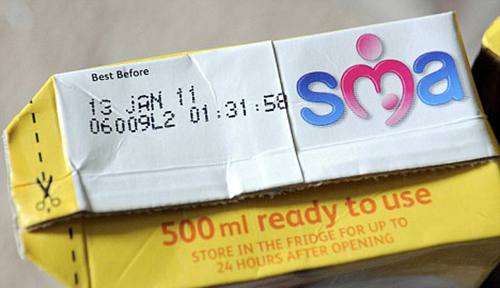
The “best before” term is used to describe the freshness state of a given product. It informs consumers on the period within which flavor and other quality parameters will remain optimal during consumption. In most cases, this kind of labeling appears on baked products such as cookies and biscuits. Other products featuring this label are snacks, cereals, and some canned products. Most foods are safe for consumption after “best before” date though the nutritional and other sensory characteristics might have significantly deteriorated, but the shelf life it still active.
Use By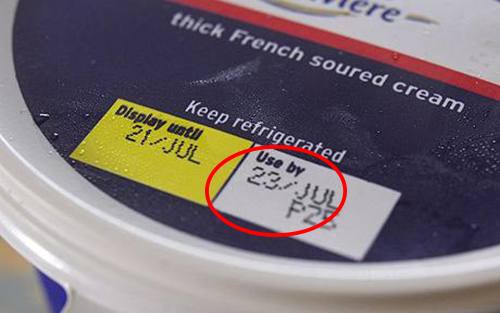
This parameter is used to indicate the potential of a given product to achieve its intended purpose in a holistic manner within the stipulated time-frame. For instance, the use by date on refrigerated dough implies the period within which the product will preserve its rising power. In perishable products such yogurt and meats, it indicates the duration of premium quality characteristics associated with these products. In some special cases, such as infant formula, the “use by” date is associated with a decrease in nutritional value. So you can actually eat the food after the use by date, but it’s probably not going to be top quality.
Sell By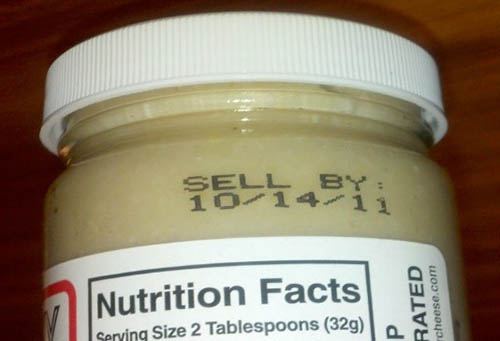
Sell by dates denote the period within which a product is to be displayed for sale in a store. Although the retailer is required to pull back the product after that date, it is legal to still sell the product since it is safe for consumption. Furthermore, the law allows the sell by date to be changed depending on the freshness and wholesomeness of the product, especially in the case of fresh products such as meats. This label is used to guide sellers on the period during which a given product is supposed to stay on their shelves. Most food products are safe to consume one week after the sell by date.
Related: How to Keep Grains Edible and Fresh for Over 40 Years With Nitrogen
Expiration Date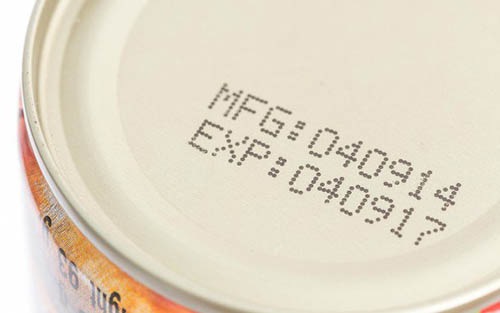
The expiration date indicates spoilage of food, and it is not fit for consumption after that day. After this date, eating such food can result in infections, and in extreme cases, it can lead to death. This is because microorganisms might have proliferated in the food due to the breakdown of various complex components into simpler compounds, availing food for pathogenic microorganisms. Furthermore, toxic compounds may have developed in the course of storage that might be detrimental to human health when consumed.
Related: What Should You Do With Your Canned Foods After the Expiration Date?
Expiration Dates and Safety Threshold of Foods
The majority of people consider expiration dates to be a critical and precise parameter that has to be adhered to by all means. As a result, huge wastage of food is being experienced due to lack of knowledge on the concept that these labels are merely printed dates for when manufacturers presume their products will be fresh and fit for consumption. However, some foods can extend these dates depending on storage conditions, and their safety threshold will still be okay when consumed. This applies mostly to processed products, and as a general rule, the more polished and processed a food is, the lengthier it can be kept past the expiration date. This rule is exempted from some meat-based products, such as sausages, hot dogs, and sandwiches meats, which are not supposed to be consumed after their expiration date. This is because they are prone to listeria bacteria, which causes listeriosis infection and, in some instances, can lead to meningitis (Robertson, 2010).
Related: How to Prepare for the Coming Food Crisis
The most common foods that can be consumed past their expiration dates include products like pasta, bread, frozen foods, canned foods, and fresh fruits and vegetables. In all these products, storage conditions will determine their suitability and reliability past that expiration date. When stored in a dry and relatively cool place, pasta can stay even double the period of its expiration date.
The same case applies to canned foods, which can also stay edible for one to two years past their expiration date when stored in a dark and cool place (Robertson, 2010). When fruits and vegetables are kept at low temperatures of around 400F, they can surpass their expiration period and stay for some weeks without going bad. However, care should be taken when exposing fruits to very low temperatures since they can experience chilling injury. Furthermore, fruits, which produce ethylene, should not be stored together with vegetables because of the degradation property of this gas.
Frozen foods can also stay beyond their expiration date for more than a month when stored in a freezer at a temperature of 00F (Aked, 2000). Whole eggs can be consumed past their expiration date provided that they record a positive result in an egg barometer test. In this method, an egg is put in a bowl full of water, and if it floats, it is not suitable for consumption since bacteria count is beyond the safety threshold.
Final Word
With an increasing number of food products on the market, it is important for consumers to be aware of the various terms applied when labeling food packages in order to avoid confusion on edible and inedible products. So with all of this being said, it looks like the dates are mostly indicators and not something to be strictly followed. The best thing you can do is to rely on your senses to determine whether or not the expired food is still good to eat since this is how our forefathers “tested” food for centuries.
You may also like:
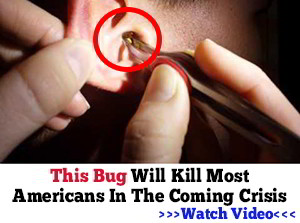 18 Must-Know Hints for Novice Preppers
18 Must-Know Hints for Novice Preppers
See It Here First: The Auto-pilot Garden That Needs No Fertilizers, No Digging and No Maintenance (video)















My problem is that I have canned goods in my “pantry area,” which is just a small closet like space in my kitchen that I’ve had since I bought my house in 2000. As far as I am concerned, these items should still be good, but I could be wrong. I am a Navy trained Preventive Medicine Technician (PMT) and one of my many jobs was inspecting foodservice facilities and stored products. One rule of thumb was whether or not a can was swollen or not. With the exception of molasses (too high sugar content) and coffee (natural gases), any can that was swollen or leaking was immediately disposed of. One trick we would do is take a normal looking can and bring it down sharply on a solid object and check for swelling. Apparently, there was spoilage, but not enough to cause the can to swell normally, but the sudden shock would show the lack of vacuum and gas caused my the microorganism. These were also disposed of. Jars are harder to determine. You look for the cap to be swollen or leaking.
So the question is, is those cans that I have safe for consumption. My problem is I buy food but generally when it comes to eat, I am not hungry for what I have on hand. My thought also, is if/when there comes a crisis, these foods may be what stave off humger. What say you?
I’m saving my “expired” cans. If it really came to a crisis where I needed food they could still be good and I would be sorry if I had thrown them out. I’m not so good at rotating because like your comment – I buy food when it comes to eat and don’t use so much of what I have on hand. I’m always adding to my stockpile so I would have some that I know are good.
Bugchaser, I am 79 years old, was brought up in the 40’s and 50’s. During the war, food was scarce (rationed). There were NO use by, best by, or expiration dates on ANYTHING. We canned most everything we ate ourselves with a water bath canner. We had as many ‘store bought’ items as possible and they were usually eaten last, sometimes YEARS after finding it way back in the pantry. We used the test “if it looks good, smells good and tastes good”, we ate it. My wife and I are still here – married 60 years last Jan.
I went to first grade in 1965. I ate school lunch. When I got to senior high, we found out we were eating world war 2 canned food in our cafeterias. It was pretty darned tasty too. Waste not, want not. And I can confirm there were no dates on any food products. Canned stuff was boiled 5 minutes to kill any bad bacteria.
THOSE FOOD RATIONS FROM WWl WHERE FILLED WITH PEMICAN. LOOK IT UP ON YOU TUBE AND SEE HOW TO MAKE IT. WILL LAST 10 YEARS SEALED AIR TIGHT IN A COOL PLACE. THOSE K-RATIONS TO DATE CAN STILL BE EATEN.
Stingray, I gotta tell you that the look, smell, and taste method could have fatal consequenes. Botulinum toxin is one of the deadliest known. 1 gram of the toxin in the water system could wipe out NYC! Yet they inject this toxin under the skin to remove wrinkles, go figure. I guess you can make the undertakers job easier as the wrinkles would be gone.
Anyways, the good news is that cooking at a high enough temperature for several minutes destroys the toxin, but not the bacteria. in a reversal of that, Staphylococcus aureus bacteria produces a toxin which cannot be destroyed by heat, though the bacteria can. S.a. toxin is one of the common sources of a foodborne illness. In both cases, there can be enough toxin in the food that can sicken or kill, without affecting appearance, smell, or taste. I had a poisoning book that told of a cook who liked the spoon, which had Botulinum toxin on it and subsequently died.
So, you might be able to get away with doing it, and apparently you have for all those years, but it only takes one time to mess up your life.
I know my mom used to can, when I was a kid, using the old blue enameled water canner. She did vegetables and fruit and she made jelly. She would put paraffin wax on top of the jelly before canning. We had an old fruit cellar in the basement. Sometimes, when a jar of jelly was opened, there might have been a little mold on it. My parents just scraped off the wax and mold and we ate the jelly with no ill effect.
BTW congratulations on your lomg marriage. Mom and dad made it to 53 before mom died, in ’09. Dad is still managing on his one at 83.
I HAVE THE SAME THING. A PANTRY WITH SHELVES ON BOTH SIDES AND POCKET DOOR TO KEEP CLOSED IT’S DARK AND COOL.
I OPENED A SMALL CAN OF PEAS THAT WHERE A YEAR OLD FROM BEST USE DATE. THE TASTED A BIT SOUR, BUT WITH SOME BUTTER, THEY WHERE FINE. DID NOT GET SICK, OR HAD ANY PROBLEMS.
Punisher, unfortunately I have no pocket doors on my pantry space. I didn’t even have any shelving in there. I bought some steel storage racks and use them for storing food items. And contrary to my training and my browbeating the foodservice people in the Navy, I have not been a practioner of “First in, first out.” I guess I am guilty of “Do what I say, not what I do.”
Bugchaser, I found that we should only store food we like to eat or it is wasted. We will not be as particular but why should we have to choke something down when we can plan ahead with stuff we enjoy? I have even added dinner mints to have something to look forward to. Also extra tooth brushes to go with them.
I would love to see a 75% off sign at my grocery store.
All the stores in our area never have sales on expired food. They donate it to the local food banks where it is distributed and EATEN!
Good information. Thanjs
I am expert at storing food. I have been canning and stocking up since 1972 when “homesteading” was vogue. I have always had a well stocked pantry. I really started getting serious (buying store-bought foods to add to my home canned) when preparing for Y2K – starting 1998. I just finished the last of the Hormel chili last night, hahaha, from then. Also, my dried beans, rice, sugar, brown sugar and most canned goods are still good (corn, green beans – low acid). However, had to throw out the tomatoes – bulging cans – last year and tomato sauce. My home canned goods are still good. Tip – freeze all flour products (except pastas). Pastas stay good on the shelf, also. Freezing flours keep weevils from hatching and also discourages ergot from forming and poisoning anyone. Canned meats are still in great shape. Meat is the most important thing to stock up. Another thing to consider – and don’t be afraid to try this – is can your own meat. You MUST use a pressure canner for all meat and low acid vegetables. If you have only one canner, make it a tall pressure canner with a meter. I can chicken when it is on sale, pork (tenderloins are on sale a lot) sausages, and broth. I even bottled butter last year and turkey drippings. I used the chart for canning meat. I have a garden and can as much as possible. I can onions, celery, carrots, cabbage and deer stew. My girlfriend gives me all the rabbits I want from her husband’s hunting and I can that and make stew. I don’t throw out anything that still looks, smells, and tastes good – only swelled store-bought canned goods. Home canning lasts almost indefinitely. Hint – get a Food Saver – the stand-up model – and you can vacuum seal foods and a lot of other things for freezer storage that will last for much longer than regular bagging or packaging. I am still eating 5-year old cheese product that I vacuum wrap in chunks.
P.S. – the cheese product I refrigerate after vacuum-sealing (not freeze).
If it’s real cheese and not a cheese product like Velveeta, it can be frozen. We buy our cheese in 2-pound blocks, cut them in quarters, vacuum seal and freeze. The cheese crumbles easier after being frozen but when it being shredded for a casserole or whatever, the crumbles don’t matter.
Hi, Suzie Queue. How do you can onions and cabbage? Do you chop them up and put them into a broth, or flavor them with herbs of some sort? I have never canned cabbage except in Grandma’s vegetable soup, fearing the sulfur compounds would make it inedible.
I’ve found that products with baking powder that also need to be prepared/cooked don’t perform well. Apparently baking powder is time sensitive. You can make your own with 2 parts cream of tartar and 1 part baking soda. Both of these are more shelf stable.
I agree with stingray, if it looks, smells & tastes ok, I’m gonna eat it! I HATE wasting food! Just the way I was raised.
Fantastic article!!! Thank you so very much. This issue has bothered me for a very long time. ♡
All I can say, in 1969 Army V/N we had cans of C-rats dated 1945 they were good.
In 1992 I grew and canned pickled Tam mild jalapenos. They have been stored in a dark, cold root cellar all these years. Best jalapenos I ever tasted, still delicious (or what’s left of them, sob). I used regular canning salt at the time, and they lost their crispness within the year. Since then I learned to use calcium chloride instead of sodium chloride, the way commercial picklers do, and they keep their body. Things also keep forever in vinegar! You can buy calcium chloride at the pharmacy or online, cheap. Be sure to keep it TIGHTLY closed, or it will suck water out of the air and become liquid.
I read somewhere that a shack left from some arctic exploration party was found with canned food still in it some extended period after the exploration party had left it. I don’t remember exactly how long after but the figure 40 years sticks in my mind. It was determined that it was still safe to eat. Now I can’t tell you how it was determined although I imagine it was the look, sniff, taste empirical testing method that was used. Now the building was a base camp shack some place in Northern Canada, so I suppose the cans were frozen solid during the winter for every year that they sat on the shelf. Freeze, thaw; freeze, thaw on and on for the extended period. One would automatically think the food would have been long ago rotten but apparently not. On the other hand, another arctic exploration party died from lead poisoning because they existed on tinned food and the lead in the tin poisoned them. One reason why cans are not sealed with tin any more. My test for edibility on some of the foods listed such as bread is the mold test. If it is moldy I throw it out unless it is just one very small spot of mold, then I cut it out and the bread is useable. If it is cheese and it is moldy, I cut the mold off, wash the cheese with white vinegar and it’s good to go. Been doing that for as long as I can remember. My mother did it when I was a child. I’m going to be 80 in May, so I guess it didn’t hurt me much. Remember, blue cheese is extremely moldy.
There are many applications for the calculation of the expiration date, I use it https://play.google.com/store/apps/details?id=info.shelflife.shelflife
Thanks. Really usefull app.
Does anyone know if Jim Bakker is legit this time or is he still a con artist? I have seen a lot of familiar(reputable) Christian leaders and conservative leaders on his program. Seems to me he is trying to scare people into buying his products. And has anyone bought any of his long term food? I hear it is horrible
Yes I believe he is legit….he does have a lot of great people (leaders) on his show…he has come a long way and everyone deserves a second chance. I do not believe he is trying to scare people…he is trying to prepare people, not scare people for what is coming. I have purchased some of the food he offers as a back up to my preps….I believe God is very pleased with his faithful servant!
Thank God I was raise in the country , but did not appreciate it at the time very little food came from the store, my mother canned enough that would last until the crops where ready the next summer.
can foods can last a long time, you just have to know what to look for, we are still using can items we canned from 2010
Sounds like a good childhood growing up patriot. I would love for my family to be self sustained like that. Man the money we would save not having to go to the grocery store. Get what you can and can what you get, then eat it.
I never consider wasting any food we can because if it does happen to go bad(mostly due to not rotating ) then we just compost it back into the garden.
I served in Vietnam in 69/70 and the c-rays we ate were dated 1952 an 1954. They were great loved beans an franks and pecan rolls and who can forget the fruit , cheese and crackers. Something kept them fresh . Only thing I didn’t like was the ground wonder meat but could be made eatible with a little mustard I always carried. See, smell, sample if it passes enjoy!!!?
I’ve had a few of those WWII/Korea-era C-rats too. I had them in the 70’s during my early years in the Air Force. I think they were a lot better than the MREs today.
We had six children in our family. During WW2, my eldest sister and her two children moved back home with us. My eldest brother’s wife and baby also moved in with us. My brother and brother-in-law were off to the war. Sooo, we had 13 people living in our home and had to feed them all. My mom canned anything she could get her hands on. We had a huge garden and cherry and apple trees. Mom canned meat as well as veggies and fruits. She had to have been a magician, because none of us went hungry. My dad was a butcher working for Krogers store. Sometimes he was able to bring home a small cut of meat that was on the older side but still edible. We also had a chicken coop filled with chickens. Everybody pitched in and helped with everything.
Those days were good days and my memories of those times are wonderful. Wish I could push a button and spend a few days back then.
I’ll be 80 in January and my memories are still as sharp as a tack.
If canned goods are getting close to expiration, or even passed it, recan. In late summer, when we’re making chow-chow and other pickles, canned carrots, corn, beans and green beans can be used. Older pickles, as well, are used. Canning in vinegar solution means the veggies stay crispy. This way, things that were stuck in the back of the shelves a little too long can be used fast. With things like chow-chow, they go fast. Man, that stuff sells for 5 bucks a quart even in discount stores.
To me, it doesn’t matter if veggies are crisp or not when canned. When SHTF I’ll be blessed to have any food I canned.